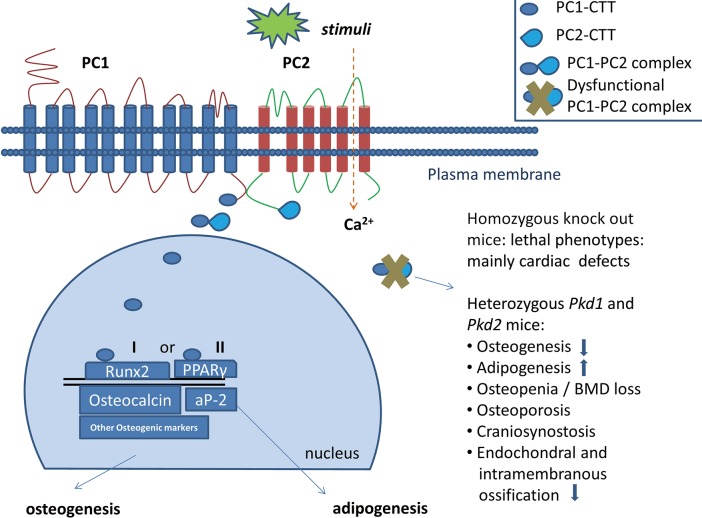Figure 1.
Polycystins 1 and 2, their structure and relation to bone disease. Together they form a complex which is either active or deactivated when Pkd1 or Pkd2 are inhibited. Form I: the PC1/PC2 complex triggers signaling pathways. PC1 CTT translocates to the nucleus where it can bind to Runx2 or other osteogenic markers and enhance the transcription of osteogenic genes. Form II: when PC1 is inhibited, this can lead to either osteogenesis or adipogenesis, through the activation of PPARγ. Deactivated Complex Form can lead to various bone disease manifestations. aP-2, Activating Protein 2; CTT, C-terminal tail; Oc, Osteocalcin; PPARγ, peroxisome proliferator-activated receptor γ; PC1/PC2 complex, Polycystin 1-Polycystin 2 complex; RUNX2, runt-related transcription factor 2.

